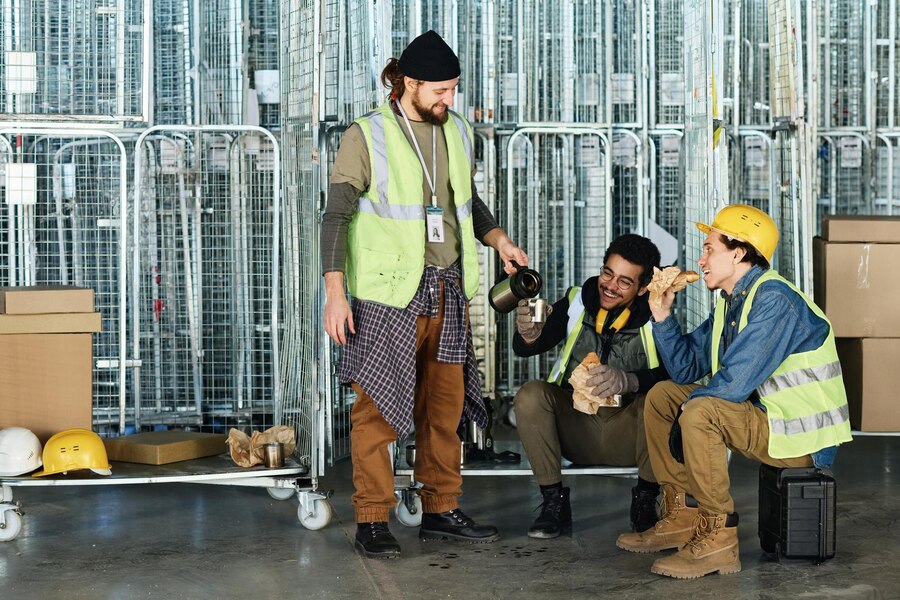Canada has introduced new restrictions affecting visitors and foreign workers in response to ongoing concerns about its immigration system. Here’s a comprehensive overview of the latest changes and what they mean for you. The End of Work Permit
The COVID-19 Era Policy and Its Purpose

A Temporary Measure for a Unique Situation
In August 2020, during the height of the COVID-19 pandemic, Canada introduced a temporary policy allowing visitors to apply for work permits from within the country. This policy was a response to global travel restrictions that left many visitors stranded in Canada. It aimed to provide a pathway for these individuals to support themselves while they were unable to leave. The End of Work Permit
The Policy’s Planned Duration and Early Termination
However, the Canadian government has decided to end it earlier than planned. Immigration, Refugees, and Citizenship Canada (IRCC) has stated that the early termination is part of efforts to “recalibrate the number of temporary residents in Canada and preserve the integrity of the immigration system.”
New Restrictions on Temporary Foreign Workers

Limitations on Low-Wage Temporary Foreign Workers
Starting September 26, 2024, the Canadian government will impose new restrictions on low-wage temporary foreign workers. This change aims to prioritize local job seekers in areas with higher unemployment rates.
Caps and Duration Reductions for Employers
Employers will also face new limits under the Temporary Foreign Worker (TFW) Program. Specifically, a cap of 10 percent will be placed on the number of low-wage temporary foreign workers employers can hire. Additionally, the maximum duration of employment for these workers will be reduced from two years to one year. These measures are intended to encourage businesses to invest in training local workers rather than relying heavily on temporary foreign labor. The End of Work Permit
The End of Flagpoling for Post-Graduate Work Permits
What is Flagpoling?
Flagpoling refers to the practice of applying for a Post-Graduate Work Permit (PGWP) at a border crossing between the U.S. and Canada. This process allowed individuals to bypass regular wait times and receive same-day services by briefly leaving and re-entering Canada.
New Rules to Curb Flagpoling
Effective June 2024, foreign nationals will no longer be able to use this method to apply for a PGWP. The government’s decision to end flagpoling is part of a broader strategy to ensure a fair and transparent immigration process. By requiring all PGWP applications to go through standard procedures, the government aims to prevent any unfair advantages and streamline the process.
Impact on International Students and the TFW Program
Expected Drop in International Student Enrollment
Earlier this year, the Canadian government announced a cap on international student enrollment, which is anticipated to lead to a 35 percent decrease in the number of international students in 2024 compared to the previous year. This move is part of a broader strategy to manage the influx of temporary residents and ensure a balanced approach to immigration.
Addressing Abuses in Immigration Programs
The government has expressed concerns about abuses within the international student and temporary foreign worker programs. Deputy Prime Minister Chrystia Freeland highlighted that while these individuals contribute significantly to Canada, there have been instances of misuse and exploitation.
Government Concerns and the Need for Reform
Growing Criticism of the Temporary Foreign Worker Program
The Temporary Foreign Worker Program has expanded considerably in recent years, more than doubling since 2016. Despite its role in supporting Canada’s economy, it has faced criticism for potentially suppressing domestic wages and leaving workers vulnerable to abuse.
Prime Minister Trudeau’s Perspective
Prime Minister Justin Trudeau has acknowledged the program’s benefits during the COVID-19 recovery but also emphasized the need to shift focus. With inflation slowing and employment levels rising, Trudeau advocates for Canadian businesses to invest in local talent and technology rather than depending on low-cost foreign labor.
The Future of Canada’s Immigration and Labor Policies
Shifting Focus to Local Talent and Innovation
The recent changes to work permit rules and temporary foreign worker restrictions reflect a shift in Canada’s immigration and labor policies. The government’s aim is to balance the needs of the economy with the need to protect domestic workers and ensure fair employment practices.
Implications for Employers and Foreign Nationals
Employers will need to adapt to these new restrictions and explore alternative strategies for meeting their labor needs. Foreign nationals will have to seek work permits through different avenues, as applying from within Canada is no longer an option. Despite these challenges, Canada remains committed to providing opportunities for immigrants while maintaining a fair and transparent system.
Conclusion: The end of the policy allowing visitors to apply for work permits from within Canada signifies a major shift in the country’s approach to immigration. These changes, along with new restrictions on temporary foreign workers, reflect the government’s commitment to maintaining a fair and effective immigration system.

The information provided in this article is for informational purposes only and does not constitute legal advice. Immigration policies and regulations are subject to change, and individuals should consult with a qualified immigration professional for specific guidance on their situation. The opinions expressed in this article are those of the author and do not necessarily reflect the views of steptoabroad.in or its affiliates.
Source: globalnews.ca
Get Free Expert Advice: Are you ready to embark on your next adventure? Whether you’re seeking a work permit, tourist visa, or study opportunities in Canada or other countries, we’re here to help! Contact us today to learn how our expert services can simplify your journey and turn your dreams into reality. Reach out now and let’s start planning your future together!
- Canada Citizenship Requirements: Everything You Need to Know
- Canada’s Global Passport Ranking: What It Means for Travelers
- Canada vs. Australia: Which Country is Your Perfect Fit for Immigration in 2024?
Also read:
- Canada’s New Rural and Francophone Immigration Pilots: A Fresh Opportunity for Skilled Workers
- Hundreds of U.S. Visa Appointments Canceled in Colombia: What It Means for Future Travelers
- Ultimate Guide to Dubai Visa Applications for Indian Tourists: Avoid Rejection & Ensure a Hassle-Free Trip with These Key Tips!
- New Canada Immigration Fees Effective December 1, 2024: Everything You Need to Know
- RS Global Immigration Jalandhar: Your Gateway to International Opportunities










